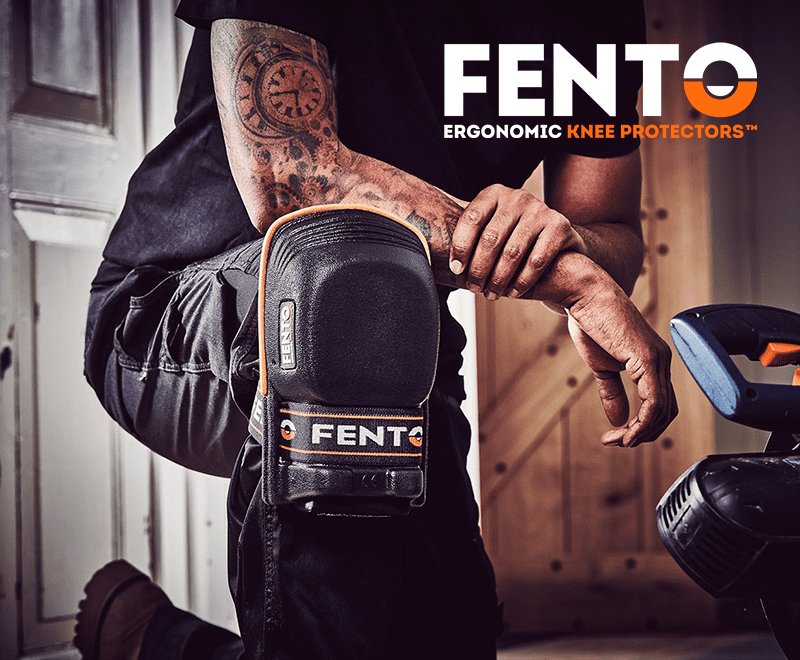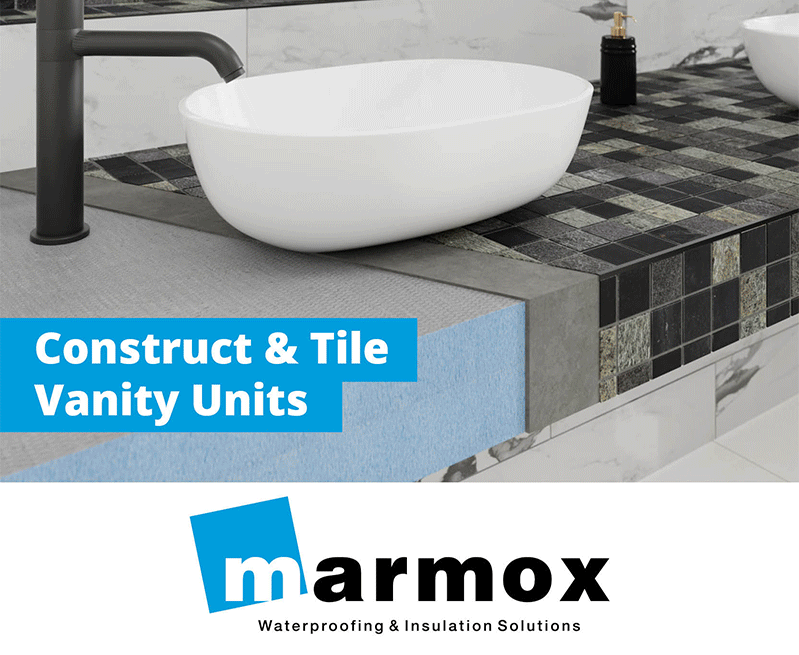Martin Pouncey, TTA’s technical & training manager, discusses how construction moisture and building moisture can affect tiling installations and offers practical solutions in line with the British Standard Codes of Practice.
It is important to avoid the negative consequences of high floor moisture by appropriately measuring and managing its levels. There are two distinct types of moisture, construction moisture and building moisture, that cause significant damage if left unaddressed. With both, moisture brings out impurities, such as soluble salts and other minerals, leading to problems such as efflorescence, delamination and mould growth.
Construction moisture refers to the excess moisture present in a newly constructed building or during the construction process. It can come from various sources such as wet trades, rainwater ingress or high humidity levels. Building moisture, on the other hand, refers to the continuous presence of excessive indoor humidity within an already constructed building. This can occur due to factors such as inadequate ventilation, plumbing leaks, or even occupant activities like cooking and showering. In both the short- and long-term, the arrival of moisture disrupts the installation of tiling in floors.
One issue commonly associated with high floor moisture is the rising of salt minerals to the surface, which is known as efflorescence. This is caused by soluble salts leaching out from within the substrate when moisture migrates through it. It not only has a negative visual impact but also indicates potential long-term durability issues and increases the vulnerability of a floor to freeze-thaw cycles in an external environment and heat cycles in floors internally with underfloor heating.
Another issue is that moisture infiltration leads to delamination, in which a tile has become loose but is held together by adjoining tiles. This compromises the structural integrity of a floor, posing a higher risk of accidents and injuries.
As BS 5385-3 explains: “Moisture rising through a solid floor is likely to contain soluble salts from the sub-soil, the hard fill and the concrete of the floor itself. These tend to accumulate in increasing concentration at or near the floor surface as long as they can be replenished from below. In the worst possible case, i.e. where the sub-soil or the fill is contaminated with acids or high concentrations of soluble sulfates which attack cement, the performance of the whole floor might well depend on adequate damp-proofing below the base (see BS 8102 and CP 102).
In less aggressive situations, damp-proofing which serves only as a capillary barrier should still be used as a precaution.”
Without the proper precautions, moisture can lead to expensive repairs or even complete replacement. Consequently, moisture testing and allowing correct dry times is essential prior to any tiling installation. It is critical to ensure that flooring installations are achieved only when the floor is dry/cured. Three different tests for determining moisture levels are described in BS 5385-3:
“a) BS 8203:2001+A1:2009 method for measuring the moisture condition of a base to receive a floor covering is to use an insulated impermeable box on top of the screed and measure the equilibrium relative humidity of the trapped air inside the box using electronic probe, or hair hygrometer.
b) BS 8203:2001+A1:2009 recommends the CM (Carbide Method) of testing.
c) The moisture content of the screed may be determined by drying a sample of the screed in an oven. The sample is weighed before and after the oven drying to determine the weight loss as a percentage of the dry weight.
NOTE – This assessment is the responsibility of the main contractor.”
If the floor is still not fully cured, then a solution will be required. Suppressants can be used to address construction moisture. These work by actively reducing the transmission of moisture from the concrete slab/ screed to the surface, effectively preventing condensation and dampness.
However, BS 5385-3 warns that: “In solid and suspended floor constructions, the base and the floor tiling usually have different dimensional responses to changes in moisture content and temperature. Probably the most extreme relative moisture movements occur when new concrete floors or screeds are covered before most of the drying shrinkage has taken place.
The shrinkage of the base and/or screed can persist for some years after the tiling has reached equilibrium with the result that compression forces can ultimately crack the tiles or break down the adhesion between the tiles and the bed in the long term. Vibration, impact and thermal shock can produce early failure while the floor tiling is in the stressed condition, as can further contraction of the base in very cold weather. Wood based sub-floor constructions exhibit dimensional changes with changes in the atmospheric humidity levels and temperature. Such movement can be significant in new constructions where lower temperatures and higher atmospheric humidity levels prevail on site during installation of the sub-floor and the floor tiling”.
Suppressants are not intended as a permanent solution for underlying structural problems.
Polythene damp proof membranes (DPMs), in contrast, provide damp proofing for both construction moisture and building moisture. Polythene DPMs come available in different thicknesses to suit specific applications, with thicker variants providing greater protection against higher hydrostatic pressure levels common in underground areas such as basements.
Liquid DPMs are increasingly used for a seamless application process that ensures complete coverage. Further information is available for purchase in TTA’s Technical Publications and Masterclasses.








